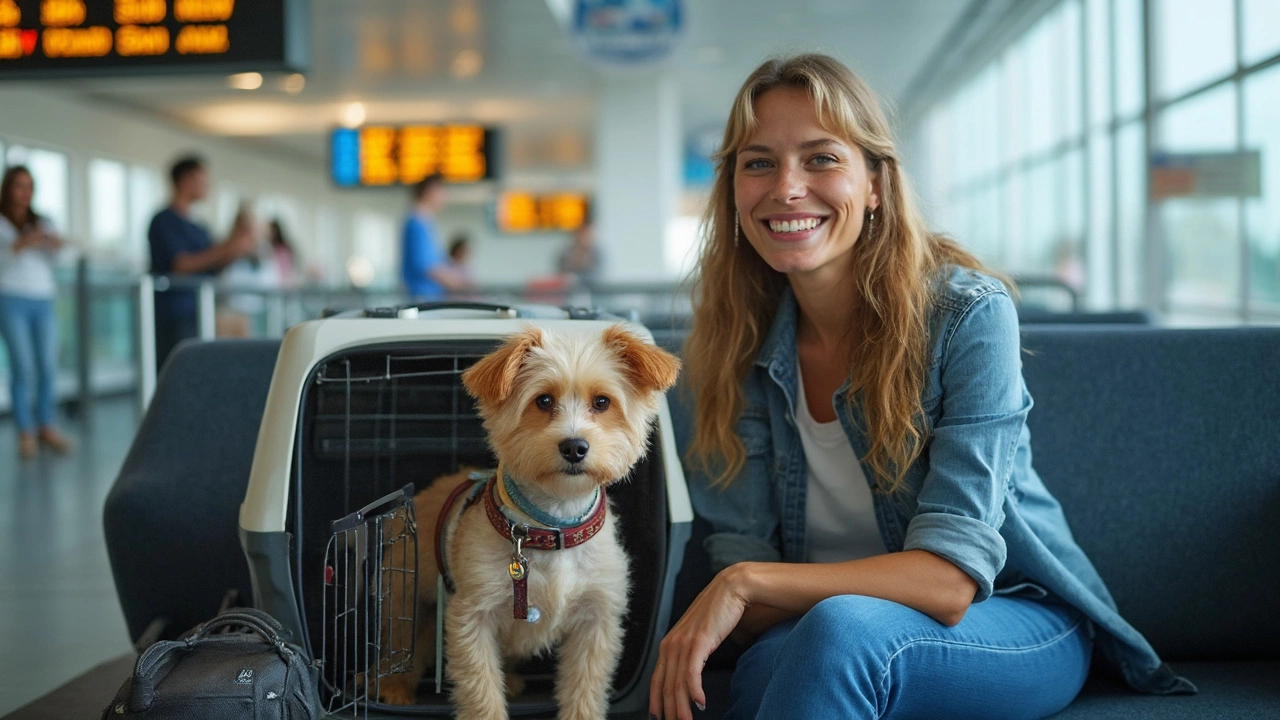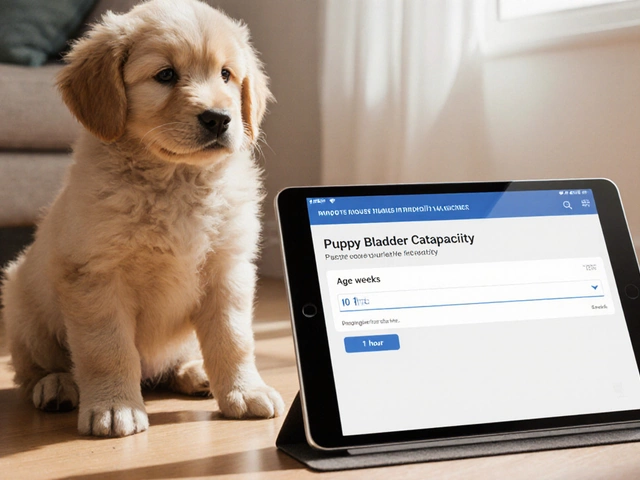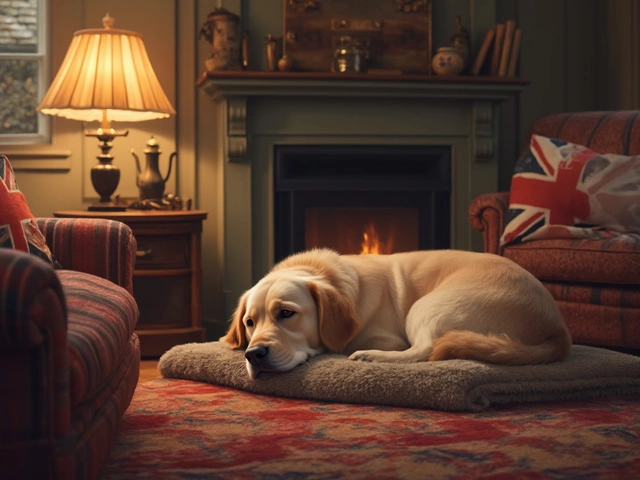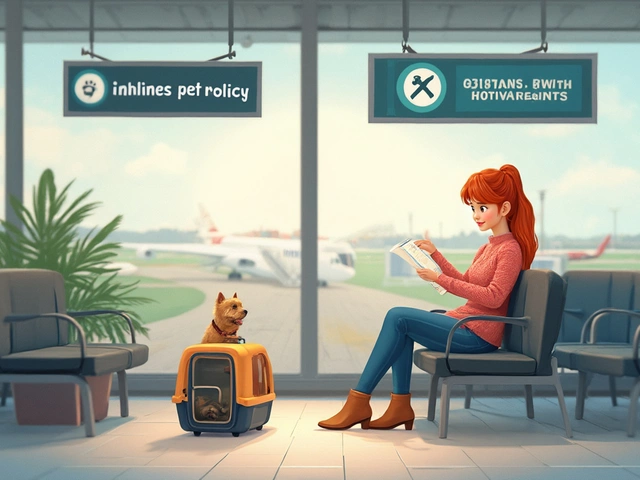Picture yourself boarding a plane, your furry sidekick tucked under your arm—easy, right? Not always. There are strict rules about what size dog can fly in the cabin, and airline staff don't mess around. If you show up with a Great Dane demanding the window seat, you’re definitely headed for disappointment.
Most U.S. airlines let you bring a small dog, but there’s a catch—the whole dog, plus its carrier, has to fit under the seat in front of you. We're talking about pups under 20 pounds, and the carrier usually can’t be taller than nine or ten inches. So if your dog is rocking Frenchie bulk or miniature poodle fluff, you'll want to double-check airline rules ahead of time.
Weight is only part of the story. The carrier size matters even more than your dog’s weight. Airlines measure the space under their seats, and no one cares if your dog hits the scale at 12 pounds if her crate looks like a doggy condo. Airports don’t hand out measuring tapes, but gate agents eyeball everything. Don’t risk getting turned away at check-in—know your airline’s limits before you book.
- Standard Limits for Dogs in Cabin
- Why Airlines Set These Rules
- Choosing a Cabin-Approved Carrier
- Size Exceptions and Unique Airline Policies
- Pre-Flight Prep: Tips for Stress-Free Travel
- Common Pitfalls and Real Travel Stories
Standard Limits for Dogs in Cabin
Let’s cut right to it: airlines have pretty clear rules for dog cabin size if you want your pup in the main cabin. Those dreamy Instagram pics of big dogs getting window views? Not happening in economy. Nearly all U.S. airlines set strict limits on both the size and weight of your dog and the carrier.
For most airlines, the dog and carrier combined need to be under 20 pounds. Delta, American, and United all stick to that limit, and your carrier has to slide neatly under the seat in front of you.
| Airline | Max Carrier Size (inches) | Weight Limit |
|---|---|---|
| Delta | 18 x 11 x 11 | 20 lbs (dog & carrier) |
| American | 18 x 11 x 11 | 20 lbs (dog & carrier) |
| United | 18 x 11 x 11 | 20 lbs (dog & carrier) |
| Southwest | 18.5 x 8.5 x 13.5 | No posted weight, but must fit under seat |
Surprised at how tight those measurements are? It really comes down to the under-seat space. This means most dogs that weigh more than a couple of bags of potatoes won’t qualify for in-cabin travel, no matter how well-behaved they are.
It’s not just about weight—airlines also care about whether your furry friend can actually stand up and turn around in the carrier. If you have a Yorkie or Chihuahua, you’re probably good. If your buddy is a Jack Russell or anything bigger, it’s going to be a squeeze.
- Double-check your dog’s length, height, and weight before booking.
- Measure the carrier you plan to use—don’t trust “cabin-approved” labels online without checking the airline’s official site.
- Remember that each airline’s policy is a bit different, so don’t copy your friend’s approach without reading the latest airline info for your specific pet travel plans.
Bottom line: tiny dogs get to fly in the cabin, but medium and big dogs usually have to travel in cargo or stay home. Read the fine print so your pet’s trip doesn’t turn into a last-minute scramble at the airport.
Why Airlines Set These Rules
The main reason airlines have such specific rules for pets, especially with dog cabin size and carriers, boils down to safety and comfort for everyone onboard—passengers, crew, and the pets themselves. Planes are tight spaces. Under-seat storage is even tighter, so every inch counts. If a dog carrier sticks out into the aisle or can't fit under the seat, it blocks escape routes and becomes a hazard if there's an emergency.
Another big issue is allergies and phobias. Imagine someone with a serious allergy or a fear of dogs sitting next to your excited pup for five hours. Airlines try to keep things fair by limiting which animals can be in the cabin and how many on each flight.
One airline spokesperson summed it up well:
"Our policies are designed to ensure pets remain safe and comfortable during travel, without impacting the experience or safety of other passengers." — American Airlines representative, 2023
Let’s not forget, airlines also have to think about ventilation and cabin air quality. Squeezing in huge dogs or extra-large crates would push these systems to their limits, not to mention create stress for the pet.
Here's a quick peek at how some top U.S. airlines set their in-cabin pet rules:
| Airline | Max Pet Weight | Max Carrier Dimensions (inches) |
|---|---|---|
| Delta | No official weight, "fits under seat" | 18 x 11 x 11 |
| United | No official weight, "comfortably inside carrier" | 17.5 x 12 x 7.5 |
| American | 20 lbs (dog + carrier) | 18 x 11 x 11 |
In short, these pet travel rules aren't random. They're based on what actually works in a cramped cabin, protects other travelers, and keeps your pup safe. So, when you see those size and weight limits, know there's a method behind the madness.
Choosing a Cabin-Approved Carrier
This is where most folks get tripped up. The best dog cabin size for your flight isn’t about what looks comfy at the pet store—it’s about what actually fits under an airplane seat. Carriers have to tick both size and safety boxes, and every airline has its own exact rules.
Let’s talk hard numbers. Most major U.S. airlines (think Delta, United, American Airlines, Southwest) require that your pet travel carrier fits under the seat, which means:
- Maximum length: 16-18 inches
- Width: usually 11-12 inches
- Height: most cap at 7.5-11 inches tall
Soft-sided carriers buy you a bit more wiggle room compared to rigid ones. If your pup can stand up, turn around, and lie down comfortably, you’re in good shape. Make sure the carrier is escape-proof and has mesh ventilation on at least two sides to keep your four-legged copilot cool and visible.
You want an airline that spells this stuff out? Alaska Airlines lists it right on their website: soft carriers at 17" x 11" x 9.5". American Airlines: 18" x 11" x 11" for soft carriers. Don’t just guess—search your airline’s requirements before buying a carrier, because the rules can shift from airline to airline, and even by aircraft type.
Here’s what really matters when picking a carrier:
- Fit for your dog: Your dog shouldn’t be squashed. They should stand, turn, and lie down, but you can’t use an XXL crate as a loophole. The carrier has to go all the way under the seat.
- Sturdy zippers and leak proof bottoms: Airlines won’t let your carrier fly if it looks like it’ll burst or leak onto the floor mid-flight. Double-check closures and carry a puppy pad just in case.
- Lightweight for you: You’re coping with TSA and overhead bins, so save your back with a carrier that’s easy to carry and quick to stow.
Thinking about flying with pets internationally or on budget airlines? Check out the fine print. Some airlines limit the number of pets in the cabin per flight, and a few (like JetBlue) even have their own branded carriers that guarantee a fit. If your carrier’s size is borderline, call ahead—sometimes you can get the exact under-seat measurements for your specific flight.
Not sure which brands work? Sherpa, Sleepypod, and Petmate are popular for a reason. They’re tough, flexible, and usually nail the airline size rules.
| Airline | Max Carrier Size (inches) |
|---|---|
| Delta | 18 x 11 x 11 |
| United | 18 x 11 x 11 |
| Alaska | 17 x 11 x 9.5 |
| JetBlue | 17 x 12.5 x 8.5 |
The bottom line: measure twice, buy once. Snap a tape measure and double-check your dog in the carrier before your trip. You don’t want a panic attack at the gate because your carrier’s a hair too tall.
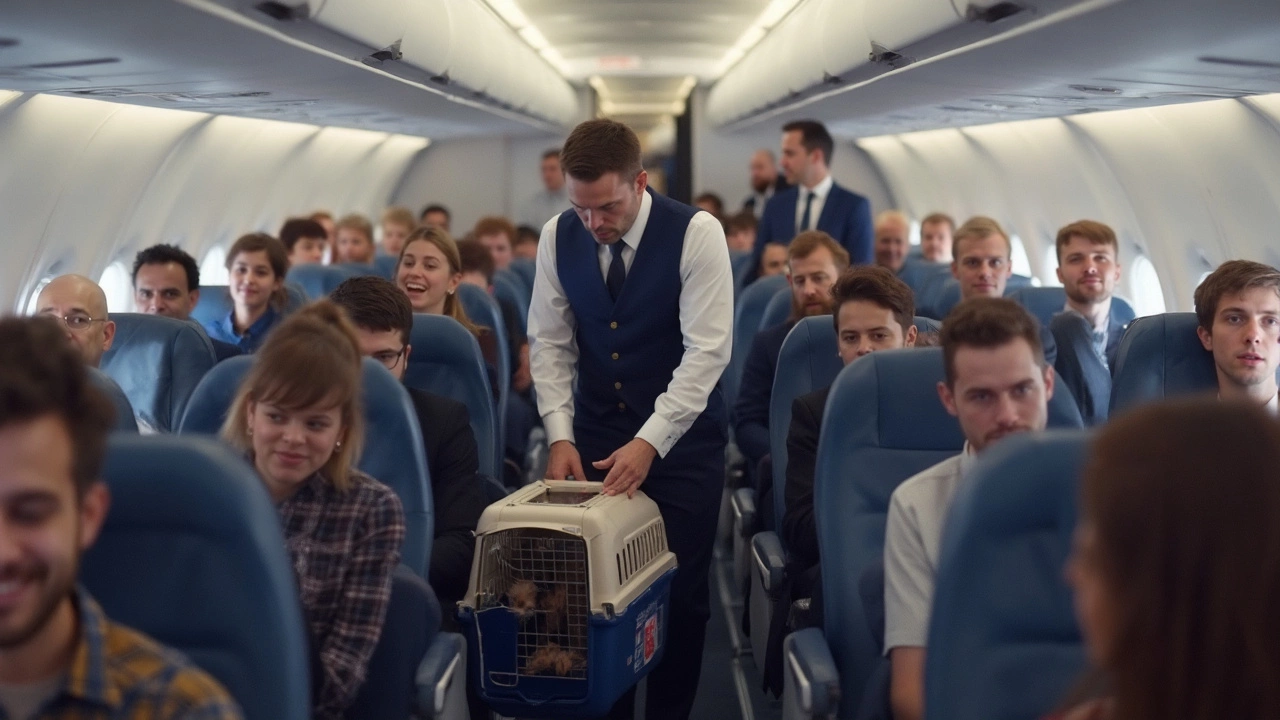
Size Exceptions and Unique Airline Policies
Here’s where pet travel gets a little weird. You’d think all airlines play by the same set of rules, but the truth is, their definitions for “cabin-approved” pets are all over the place. If you’re flying international, or on one of the budget airlines, expect even more surprises.
Let’s look at a few specific examples for dog cabin size and pet travel rules:
- Delta Airlines: Allows a dog and carrier with a combined weight under 20 pounds, and the carrier itself maxes out at 18” x 11” x 11”. They don’t measure your actual dog—just whether the dog fits comfortably inside the box with the door closed.
- United Airlines: Wants your dog and carrier to fit within 17" x 10" x 9.5". They don’t announce a specific weight limit, but if your dog looks squeezed, they might turn you away at the gate.
- JetBlue: Sticks with carriers up to 17" x 12.5" x 8.5" and a strict 20-pound limit (pet plus carrier). JetBlue actually makes you reserve a “pet spot,” since each flight only allows four animals in the cabin.
- Southwest: The carrier must be 18.5" x 8.5" x 13.5" or smaller. Again, weight isn’t the main issue—it’s all about whether you fit under the seat. They let you bring two small dogs in one carrier if both can move around comfortably, which is rare among U.S. airlines.
Now, here’s something people miss: some international airlines are more generous. For example, Air France and Lufthansa both allow slightly larger carriers (sometimes up to 18-19 inches long), and Lufthansa even allows pets up to 17 pounds. But always double-check, since each route/plane can be different—and what passes on a big international flight might not work on a small, regional one.
Service dogs and emotional support animals used to get special treatment, but in 2021, U.S. airlines cracked down, only guaranteeing in-cabin access for trained service dogs (not “emotional support” pets). Otherwise, your dog needs to meet the same airline rules as everyone else.
Check out this quick-reference table:
| Airline | Max Carrier Size (inches) | Weight Limit (pet + carrier) | Special Notes |
|---|---|---|---|
| Delta | 18 x 11 x 11 | 20 lbs | Dog must fit comfortably in carrier |
| United | 17 x 10 x 9.5 | None stated | Discretion used at boarding |
| JetBlue | 17 x 12.5 x 8.5 | 20 lbs | Reserve a pet slot in advance |
| Southwest | 18.5 x 8.5 x 13.5 | None stated | 2 small dogs OK in 1 carrier |
| Air France | 18 x 11 x 9 | 17 lbs | International flights only |
| Lufthansa | 22 x 16 x 9 | 17 lbs | Check aircraft type ahead |
Here’s the bottom line: don’t guess. Airlines update pet policies faster than you’d think, and even agents at the airport sometimes get flustered with the details. Confirm your flight’s flying with pets rules—on both the airline’s website and by calling—before you pay for your ticket. And if your dog is right at the size limit? Go for a soft-sided carrier—those give you just a little bit more wiggle room under a tight seat.
Pre-Flight Prep: Tips for Stress-Free Travel
Nobody wants a panicked dog on a plane, or a meltdown at the check-in counter. Getting your dog cabin size right is just the start—prepping for the flight is where the magic really happens.
First, give your dog a chance to get cozy in their carrier well before your trip. Lay it out with their blanket and let them hang out in it at home. Most travel pros say at least a week of daily practice makes a huge difference. You want your dog to see the carrier as their safe zone, not the jail cell it becomes if they’re new to it on the big day.
- Check your airline's pet policy and print it out—sometimes airport staff get the rules wrong. Bringing a copy can save you stress if there’s confusion at check-in.
- Visit your vet a week or two before you fly. Most airlines require a health certificate dated within 10 days of travel for domestic flights, and much stricter rules for international trips. Don’t get caught without paperwork.
- Pick the right carrier. Soft-sided carriers are best for squeezing under most seats. Make sure it’s airline-approved and that your dog can stand up, turn around, and lie down comfortably.
- Acclimate your dog to airport noises by taking them on car rides with the carrier or playing terminal sounds at home. Yes, YouTube has those playlists!
- Skip food right before the flight. Feed a small meal a few hours ahead—fewer accidents, less chance of motion sickness.
- Exercise your pup before you head to the airport. Tired dogs nap in carriers; hyper dogs don't.
It’s also a good idea to tape your contact info and your flight details on the carrier, along with a photo of your dog—just in case you get separated (unlikely but better safe than sorry).
Don’t forget airport security rules. You’ll have to take your dog out of the carrier, hold them, and run the empty carrier through the x-ray machine. Bring a leash and a harness so your dog doesn’t bolt. The Transportation Security Administration (TSA) specifically tells travelers to avoid loose pets at security checkpoints—no one wants to be the person scrambling after a runaway Yorkie.
| Prep Step | When to Do It |
|---|---|
| Carrier training | 7-14 days before flight |
| Vet visit / Health certificate | 1-2 weeks before flight |
| Check airline rules | Before booking |
| Pack paperwork and ID | Night before |
| Feed light meal | 3-4 hours before departure |
| Exercise your dog | Before leaving home |
With a bit of prep, your pet travel experience can go from stressful to smooth. Most dogs relax once they’re tucked under the seat and the engines start humming. The real challenge is handling the little stuff before you board.
Common Pitfalls and Real Travel Stories
You’d think reading airline rules online means you’re set. But airports are full of people stuck in awkward situations with their dogs. One big mistake? Not checking the exact measurements of your carrier and your airline’s under-seat space. A guy I met in Atlanta showed up with a bouncy 16-pound Shih Tzu. The problem? His carrier had a rigid frame and was two inches too tall, so the flight crew made him check his dog as cargo. Not fun.
Carriers with soft sides can seem safe, but if your dog can’t stand, turn around, or lie down comfortably, airlines might still say no. Especially on older planes or smaller aircraft, that space under the seat shrinks a lot. Double-check the specific model of the plane when booking. Some planes have just 8 inches of clearance—barely enough for most "cabin approved" bags.
A common pitfall is getting cocky after breezing through security, then being stopped at the gate. Airlines like United and American have been known to re-measure carriers at boarding, not just at check-in. So don’t relax until you’re actually in your seat.
Here are a few tips to avoid the biggest travel headaches:
- Measure your dog carrier at home and compare with exact limits for your ticketed airline.
- Know your flight’s aircraft model ahead of time—the space can change.
- Show up early and talk to the gate agent. A little friendliness goes a long way if your carrier just barely squeezes under the seat.
- Pack a roll of pee pads and plan for bathroom emergencies—long delays are brutal!
There’s also a little-known rule kicker: dogs in cabin count as your one carry-on. I met a woman at LAX last December who nearly left her laptop bag behind because she hadn't heard this. She had to check her bag at the last minute, and it cost her $40.
Want actual numbers? Here’s a quick look at airline dog weight and carrier size limits in 2025:
| Airline | Max Dog Weight | Carrier Size (L x W x H in inches) |
|---|---|---|
| Delta | No weight listed, must fit under seat | 18 x 11 x 11 |
| American | No weight listed, must fit under seat | 18 x 11 x 11 |
| United | 20 lbs | 18 x 11 x 11 |
| Alaska | 20 lbs | 17 x 11 x 9.5 |
Bottom line: just because your dog cabin size seems okay, don’t skip the fine print or you could end up scrambling at the airport. Stick to the rules, pack smart, and check for any recent changes before you fly.

